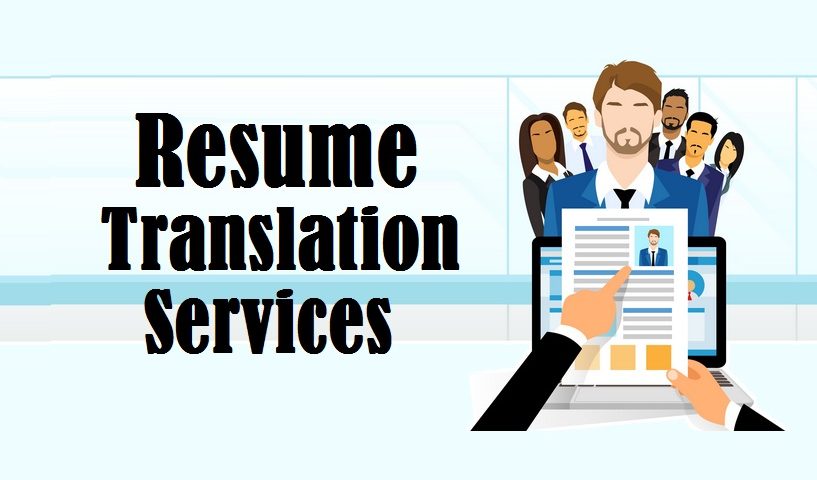Resume Translation

Letter Translation
June 14, 2018
Translation Service – Translate from English to Chinese
July 2, 2018Resume Translation

Every job seeker wants his or her resume to stand out from the crowd. But achieving this goal isn’t as easy as it was several years ago. Today, you not only have to make your resume reader-friendly for humans, but you also have to tailor it so that when it’s scanned for key words and phrases, a machine likes it too. It will be useful for resume translation done too. What exactly is scanning? It’s essentially a process in which employers take your hard copy resume and turn it into a computer file. If you’ve ever tried to convert a document from one computer program to another, you know how tricky it can be to get everything transferred correctly. It’s the same principal with scanning your resume; you’ve got to know some tricks to make your resume translate well. Below are some helpful hints to get you started.
· Go for the hits. Create a list of key words and phrases from the job ad that you think are important, and then make sure you include them at least once in your resume. More than once is good, especially if it makes sense to do so. It’s kind of like writing for search engine optimization: you want the computer to pick up on the fact that your resume has all of the “ingredients” to rank it highly, but you don’t want to stuff it so full that a pair of human eyes will toss it because it doesn’t make sense. Do engage resume translation services to proofread your resume to ensure it is written with grammatically correct.
· Format for success. If you’re certain that your resume will be scanned, you may want to consider a slightly different format. Much like with a functional resume, list your general skills and experiences at the top of your resume (those that incorporate the key words and phrases). Why? The computer will immediately be impressed. You can expand on your greatest hits later in your resume.
· Word it well. After the third time you’ve used verbs like “managed,” “designed,” or “operated,” you’ll probably be looking for more creative ways of saying the same thing. That’s fine, as long as you don’t get so creative that the computer doesn’t register your task. If it’s scanning for “managed”-as in how many people you managed in your last position-and you decide to say something such as, “I saw to the professional needs of five staff members,” the computer will skip right over it. Some sophisticated scanning systems are programmed to look for synonyms, but don’t gamble a possible career on it.
· Skip the fancy stuff. When you suspect (or know for certain) that your resume will be scanned, pass on the colored paper or decorative fonts. Use plain white paper and a basic 11- or 12-point font such as Ariel or Times New Roman. Fancier fonts may come across as unintelligible to the scanning device. Other things to skip: bold, underline, and italics-all of which will likely be ignored by the computer. Also, resist graphics, colored ink, and bullet points. Make sure all of your text is left-aligned (no centering), and as with any other kind of resume, don’t staple pages together.
· Snail mail (or e-mail) is best. The job posting may specify whichmeans of delivery you should use, but when in doubt, use the good old U.S. Postal Service. Faxing isn’t a good idea, as it lowers the quality of the document, making it even more difficult to ensure successful scanning.
· Make sure humans will think it’s top-notch. Lastly, remember that your resume translation also has to impress people. Either before or after the computer scans your resume, a human will probably glance through it as well-especially if the computer gives it a thumb’s up. Tailoring your resume translation for today’s electronic age doesn’t give you a green light to skip the editing process. Read it through carefully several times to catch any grammatical or spelling errors, and then have a friend take a look.
We are translation agency in Singapore also offering services of Letter Translation. Please check out our offer.
